Last Updated on June 20, 2024 by Michelle
You probably won’t be surprised to know that I truly love my old wide-plank wood floors in our 200-year-old farmhouse. But you may be surprised why.
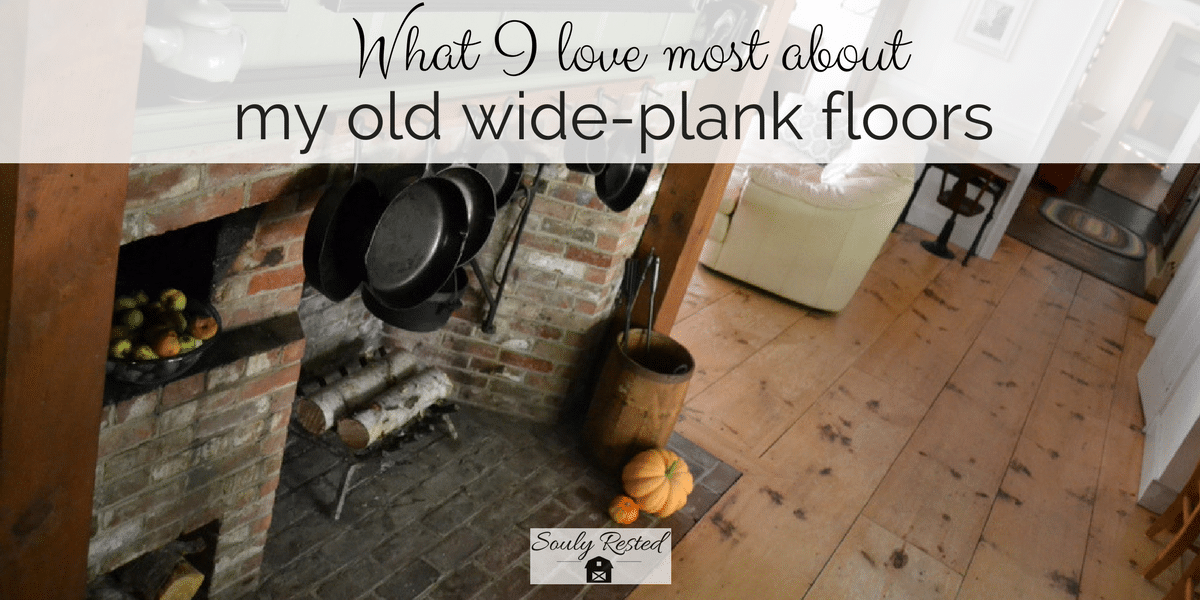
EDITED TO ADD: This is just the first of many articles about our old farmhouse floors and our 220-year-old New England farmhouse. Go here for the rest of the story. ********
The morning sunlight, infused by the old wavy panes of glass, loped around the dark-stained, wide floor planks. Boxes were still unpacked. Walls were in need of paint. The barn and storage units were overflowing with our furniture. But those worn, neglected boards called for attention.
Our Old Farmhouse Floors
Did the men who crafted them more than 200 years ago know the results of their labor would be installed in the cape cod being built at the intersection of the lake and river in that rural NH area?
Our town was only 40 years old, settlement having been delayed more than 3 decades thanks to the French Wars. In such a young, rural town, did these craftsmen have an inkling that the fruit of their efforts would still be trod by bare feet racing to dinner, and used as a bed by a family mutt staying cool on a summer’s day, 214 years later?
Those old boards, worn down and barren of protection in most areas, needed to be refinished, or their beauty would be lost forever.
The Craftsmanship of the Wide-Plank Floorboards
Those saw marks. I was worried that refinishing would erase them. Erase the fingerprints of craftsmen whose trade is almost forgotten.
Maintaining those marks would keep the character alive of not only the beautiful patriotic floors but also, in a small way, the hardworking men who sweated and strained to make them so beautiful.
If you love history or old floors you’re gotta read this post. I thought it was the coolest thing EVER about our house.
Most likely, the men who crafted the floorboards in the late 1700s worked together in a team of 4-6. This “pit crew” was aptly named, because they needed a deep pit to do their job.
Two men would work together at a time, one down in the pit and one at ground level, each controlling different ends of the long, dual-handled saw.
Across the pit balanced a huge log. It had been squared with hand tools and marked with chalk lines, recording the direction it was to be cut with a vertical sawing motion. After 30 minutes of back-straining labor, usually resulting in two rough-sawn wide planks, the craftsmen would hand the saw over to two others on the crew.
By tag teaming this grueling effort, the pit crew could use all the daylight available to them—crafting wide pine planks that would then be hand planed and used for flooring, furniture, or home siding—from sun up to sun down.
Their craftsmanship had been preserved in my home through all these generations.
The only problem with my plan? I had no idea how to execute it. (Okay, in reality, maybe there were many problems.)
So I did what any perplexed old-home owner in New England would do. I sent an email to Norm Abrams and Tom Silva. (Okay, I posted a question to This Old House website.) Realizing that Norm and Tom may take a few days to get back to me, I also took the advice of a friend of a friend. The only person who didn’t suggest wall-to-wall carpet or a large drum sander. He himself had spent months crawling around on his knees over 4,000 square feet of antique floors in a courthouse on the mid-atlantic seaboard that dated even older than our home. He wound up with an authentically restored wide-plank floor using no power tools.
So while I waited for Norm’s response, I got down on my knees and started scraping my own marks of labor beside the ones made in the 1700s. What’s left I’m hoping will show some of their labor and lots of my own and hopefully our combined effort, that spans two centuries, will last and be enjoyed for another century or two.
Read more about my floor refinishing progress in this post.
I’ll post details of my slow-moving exercise of love, and more that I learn about the history of these amazing wide boards, over the weeks to come. For now, I’m thankful for a break from my labor to enjoy a luxurious sunset over the lake tonight.
What I’ve learned so far about refinishing an old floor?
- Citristrip sounds great but, for my purposes, it didn’t cut it. It just couldn’t penetrate as deep as the dark, oil-based stain.
- The alternative to an all-natural, safer stripping gel can be pretty potent stuff. Definitely only use it if you can ventilate your work area well and if you’re wearing jeans and have chemical-resistant gloves. That being said, the smell is fine as long as I have all the windows open, it is easy to work with, and it works quickly (more like 5 minutes instead of the 15 the manufacturer recommends). Of course “quickly” is relative when one is working on a one-foot-square area for 20 minutes at a time and one has a 20×20-foot area to complete.
- One needs a good scraper and file. I file my blade with every new board or it is ineffective.
- It’s hard.
- It’s unbelievably time consuming.
- It hurts ones knees and back.
- Did I mention it’s really hard?
UPDATE: A few weeks later, I changed my approach and found a totally different product to help. Read all about our newly refinished old floors here.
My Story
While I revel in the changing colors over the still water, I consider how thankful I am that my beautiful old floor boards have a story that has now become part of my own.
While I am working to redeem their prior glory, I am most significantly thankful that God didn’t leave me in my depraved state, worn down by the scars of my sin. While he’s restoring me day by day and writing a beautiful story with my life, I have assurance that one day I will be better than ever. Oh, glorious day! One when neither morning rays streaming across my old floors nor the day’s end colors infused across the lake will even begin to match the beauty of “the river of the water of life, as clear as crystal, flowing from the throne of God.” (Revelation 22:1)
More info about our old farmhouse:
The rest of our refinishing story
The history story no one every told you about wide-plank floors
3 Secrets Old-Home Owners Won’t Tell You
My favorite things in my old farmhouse kitchen
“Let the redeemed of the Lord tell their story.” Psalm 107:2
Pin this for later!
Click on the image below to pin this post.
Find out why SoulyRested was considered to be one of the Top Homesteading Blogs of 2022.
I’d love to connect!
To find me in some other neck of the woods, just click any (or every!) icon below:

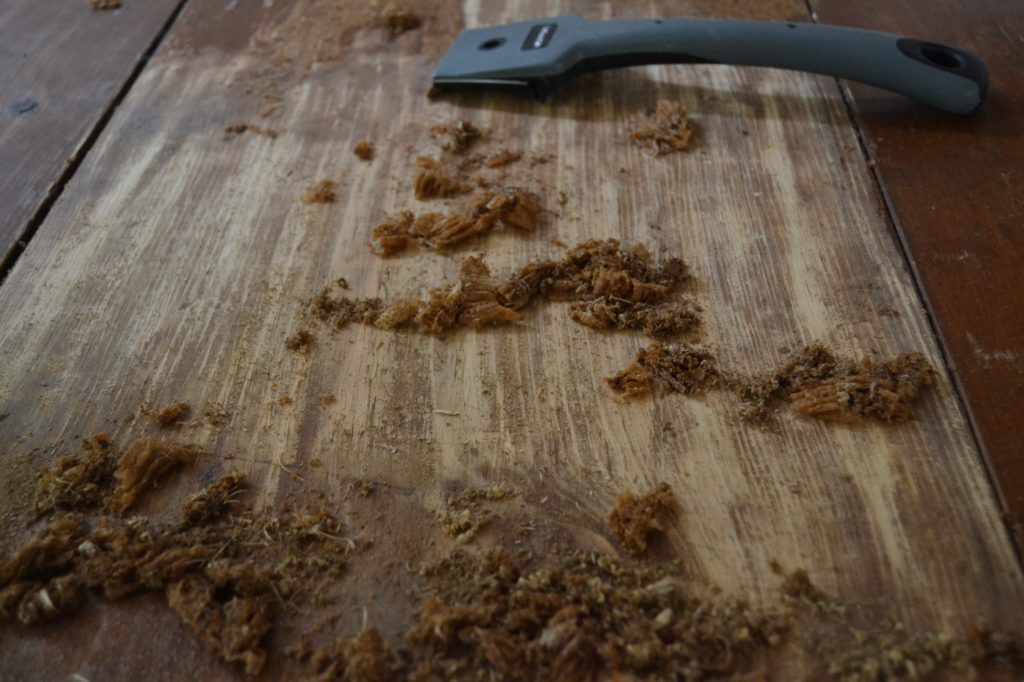
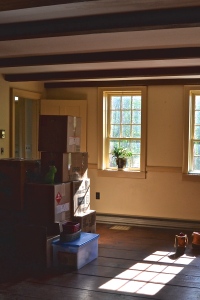
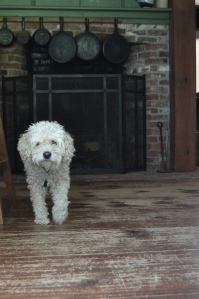
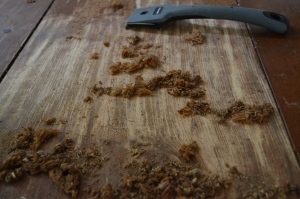
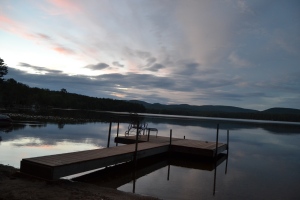
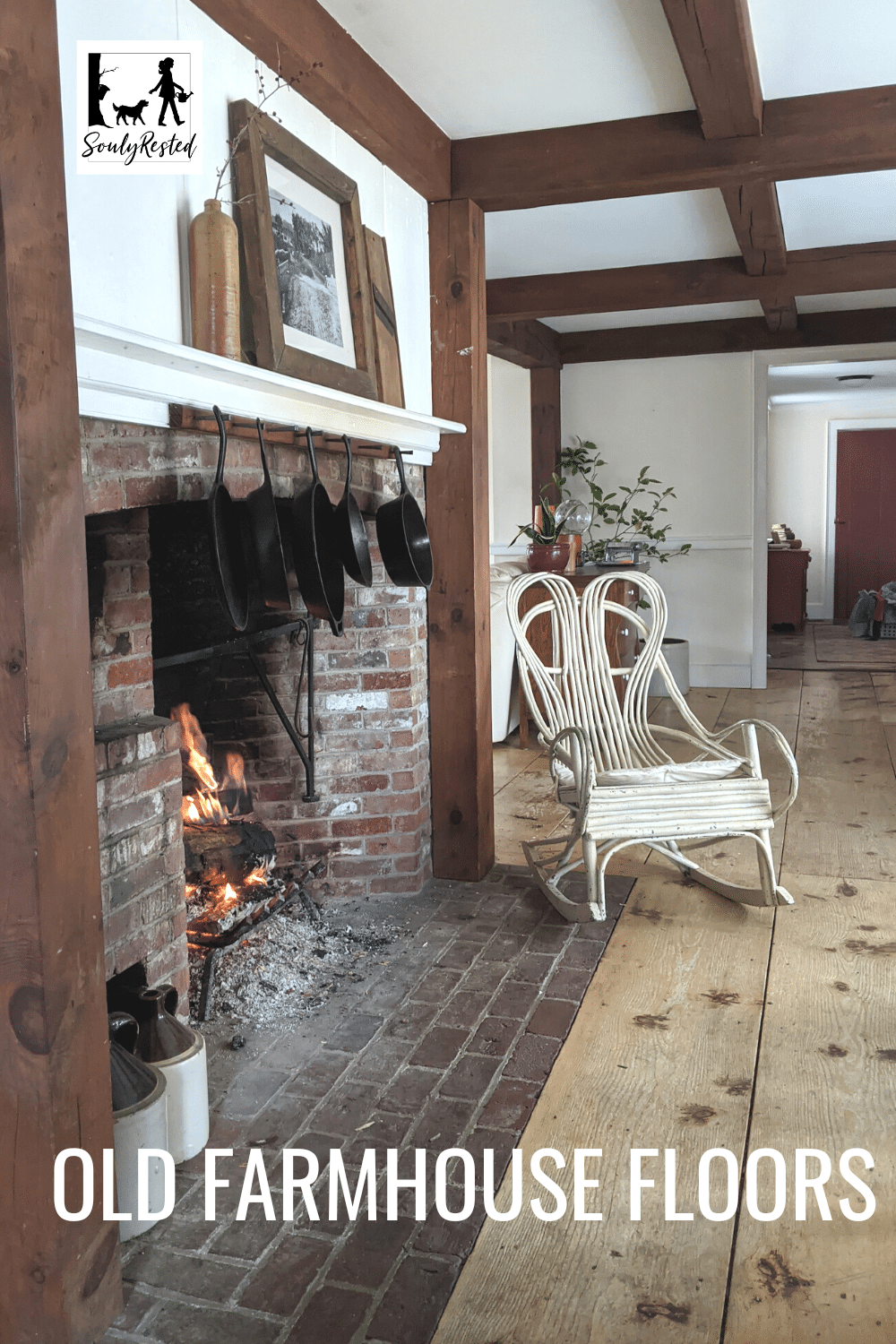





Kudos to you for doing it the hard way and preserving the history so many take for granted. I doubt there are many people who ever stopped to consider the work that went into making those planks to begin with. I’ll be looking forward to watching your progress!
History is great isn’t it? I find it to be very grounding, a reminder the good things in life are worth the effort. I love those floors, the quality of wood compared to what is available today speaks volumes.
We’re turning our shed into a Tiny House and after taking about 4 months to just come up with a floor plan we finally started last week with a stove install. This project will be a slow process but your floors have given me an idea for the tiny floor. I want this farmhouse appearance because the shed is shaped like a barn with two lofts. This style would fit perfectly… This was inspiring thanks for sharing so glad I stopped by.
Yes, Carole, history fascinates me. Indeed, I am blessed to be reminded daily of the value of effort. Living in an old home, one is surrounded by reminders that the efforts of one generations will benefit many to come.
Your tiny house sounds truly wonderful.
Did your floor have wide cracks between the planks? My does!!! Filled with 200 year old dirt! I have my cold and wet dirt floor basement sealed and that only dried out the dirt and cracks more. Would love to know if you filled in the cracks!
Funny, I tried to fill in the cracks in a few places when I put a sealant on the boards but it didn’t work anyway… yes, lots of deep wide cracks in these old floors. We had part of our 1st floor ceiling down many years ago and that exposed the old, original wood floor planks for the second story. At some point someone had covered the bottom side of the 2nd story floor boards with wall paper. A historical analyst of such things dated the paper most likely in the 1860s-1870s. But my point was going to be we have dirt-filled floor cracks in our ceilings too. 🙂
Thanks for replying! Tried to ask This Old House but never got back to me! And several contractors told me to put a sun floor down and carpet!!! 🤪No way! I’ll live with cracks!!
me tooooo 🙂
Thanks for replying! Tried to ask This Old House but never got back to me! And several contractors told me to put a sun floor down and carpet!!! 🤪No way! I’ll live with cracks!!